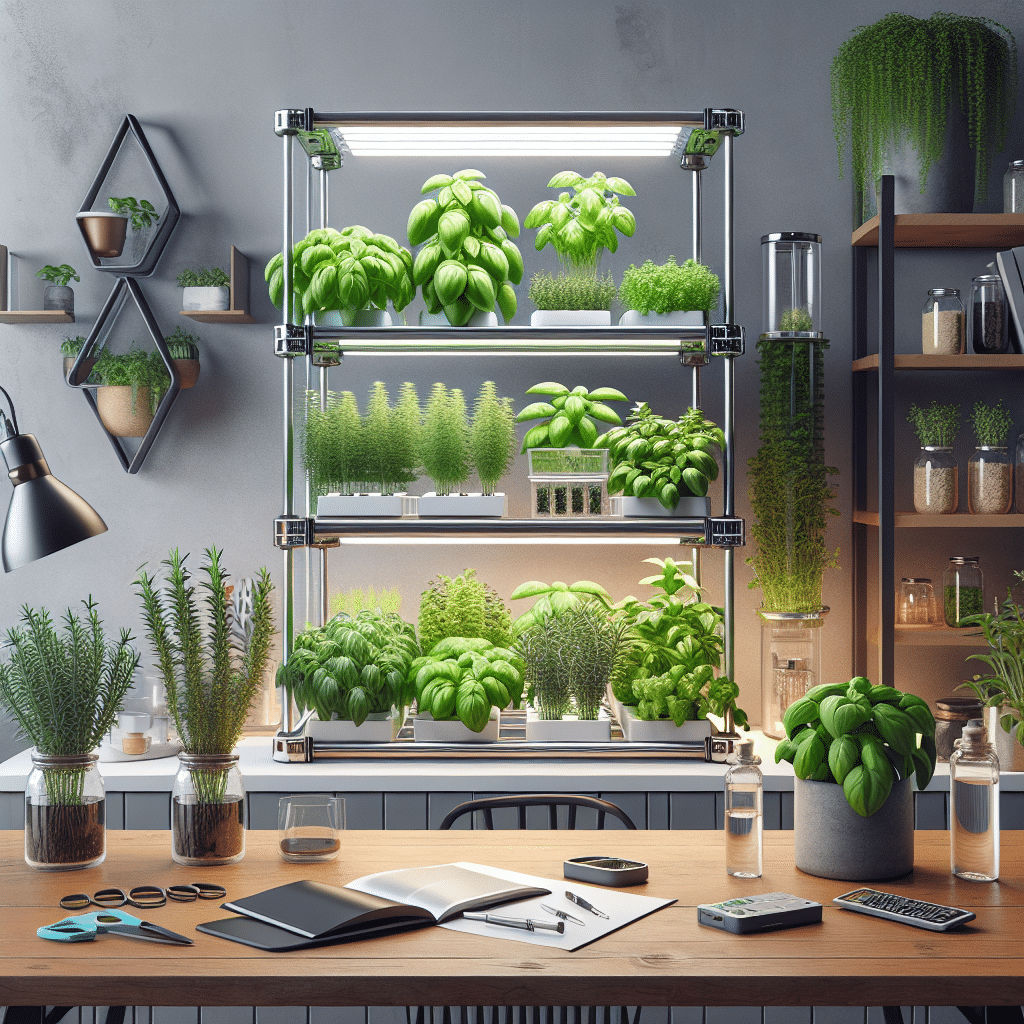Easy-to-Build Hydroponic Herb Garden for Urban Living
Understanding Hydroponics
Hydroponics is a method of growing plants without soil by using nutrient-rich water solutions. This technique is becoming increasingly popular for urban dwellers looking for efficient ways to grow their own herbs. The benefits include space efficiency, reduced water usage, and maximum control over plant nutrients.
Benefits of a Hydroponic Herb Garden
- Space-Saving: Ideal for apartments or homes with limited outdoor space.
- Faster Growth: Plants grow quicker in a hydroponic system due to direct access to nutrients.
- Pest Control: Reduced soil-related pests minimizes the need for pesticides.
- Year-Round Growing: Control over environmental factors allows herb cultivation throughout the year.
- Fresh Produce: Enjoy fresh herbs daily, enhancing the flavor of your meals.
Selecting the Right System
1. Deep Water Culture (DWC):
- Description: Plants are suspended in a nutrient solution with their roots submerged in water.
- Setup: Requires a container, an air pump, and net pots.
- Suitability: Great for beginners as it’s simple to assemble and maintain.
2. Nutrient Film Technique (NFT):
- Description: A thin film of nutrient solution flows over the roots of the plants.
- Setup: Requires sloped channels where the liquid can circulate.
- Suitability: Considered more advanced; ideal for those ready for a project.
3. Aeroponics:
- Description: Roots are suspended in air and misted with nutrient solution.
- Setup: More complex and requires precise timing for the misting system.
- Suitability: Best for experienced hydroponic gardeners.
Essential Components
Containers:
Choose a watertight container, such as plastic buckets or storage totes. Ensure they can hold water and nutrients without leaking, ideally made from food-safe materials.
Net Pots:
These pots allow roots to hang into the nutrient solution while supporting the plant. Place a growing medium, such as rock wool or hydroton, in these pots to help stabilize young plants.
Air Pump and Air Stones:
An air pump with air stones will oxygenate the water, which is essential for plant growth. Ensure the pump is suitable for the size of your hydroponic system.
Nutrient Solution:
Select a hydroponic nutrient solution designed for the type of herbs you plan to grow. Ensure the proper balance of macro and micronutrients.
Lighting:
If natural light is insufficient, opt for grow lights. Full-spectrum LED lights are energy-efficient and can be adjusted according to plant needs.
Choosing Your Herbs
Selecting the right herbs to grow is crucial. Some of the best options for hydroponics include:
- Basil: Thrives in hydroponic systems, perfect for numerous dishes.
- Mint: Grows rapidly, perfect for tea or cocktails.
- Thyme: A low-maintenance herb that does well in hydroponic setups.
- Chives: Easy to grow and can be harvested frequently.
- Oregano: A flavorful herb excellent for seasoning.
Step-by-Step Setup
-
Gather Materials: Collect all components necessary for your chosen hydroponic system.
-
Construct the System: Depending on your choice, assemble the container, pump, and nutrient solution reservoir.
-
Prepare Nutrient Solution: Mix the nutrient solution according to the manufacturer’s instructions, ensuring pH levels are optimal (around 5.5 – 6.5 for most herbs).
-
Plant the Seeds: Place seeds in the net pots filled with the growing medium. Ensure they are securely positioned.
-
Set Up Lighting: If using artificial lighting, set it above the plants for about 12-16 hours daily, adjusting according to plant growth stages.
-
Monitoring and Maintenance: Regularly check water levels and nutrient concentrations. Refill as needed and monitor the health of your plants.
-
Harvesting: Start harvesting your herbs once they reach a height of 6-8 inches. Regularly trimming will promote new growth and healthier plants.
Troubleshooting Common Issues
-
Yellowing Leaves: This could indicate nutrient deficiencies or overwatering. Adjust nutrient levels and ensure the system retains proper drainage.
-
Wilting Plants: Wilting may result from insufficient oxygen. Check air stones and oxygen levels in the water.
-
Root Rot: Keep an eye out for decay around the roots, often due to stagnant water. Ensure adequate aeration and adjust watering schedules accordingly.
-
Pest Infestation: While hydroponics limits soil pests, aphids or spider mites may still arise. Use organic pest control methods as needed.
Tips for Success
- Label Your Herbs: Keep track of herb varieties and their unique needs by using labels on each pot.
- Monitor pH Levels: Regularly test and adjust pH levels for optimal nutrient absorption.
- Rotate Your Crops: Rotate the types of herbs grown to prevent nutrient depletion.
- Use Companion Planting: Some herbs naturally repel pests when grown together.
- Document Your Progress: Keeping a journal of growth patterns and issues will help improve future setups.
Conclusion
This hydroponic herb garden project not only allows for fresh, home-grown ingredients but also contributes to a sustainable lifestyle in an urban environment. By engaging with this method, urban dwellers can enjoy gardening year-round, regardless of limited space. So gather your supplies, plan your system, and begin cultivating a green oasis right in your home!
